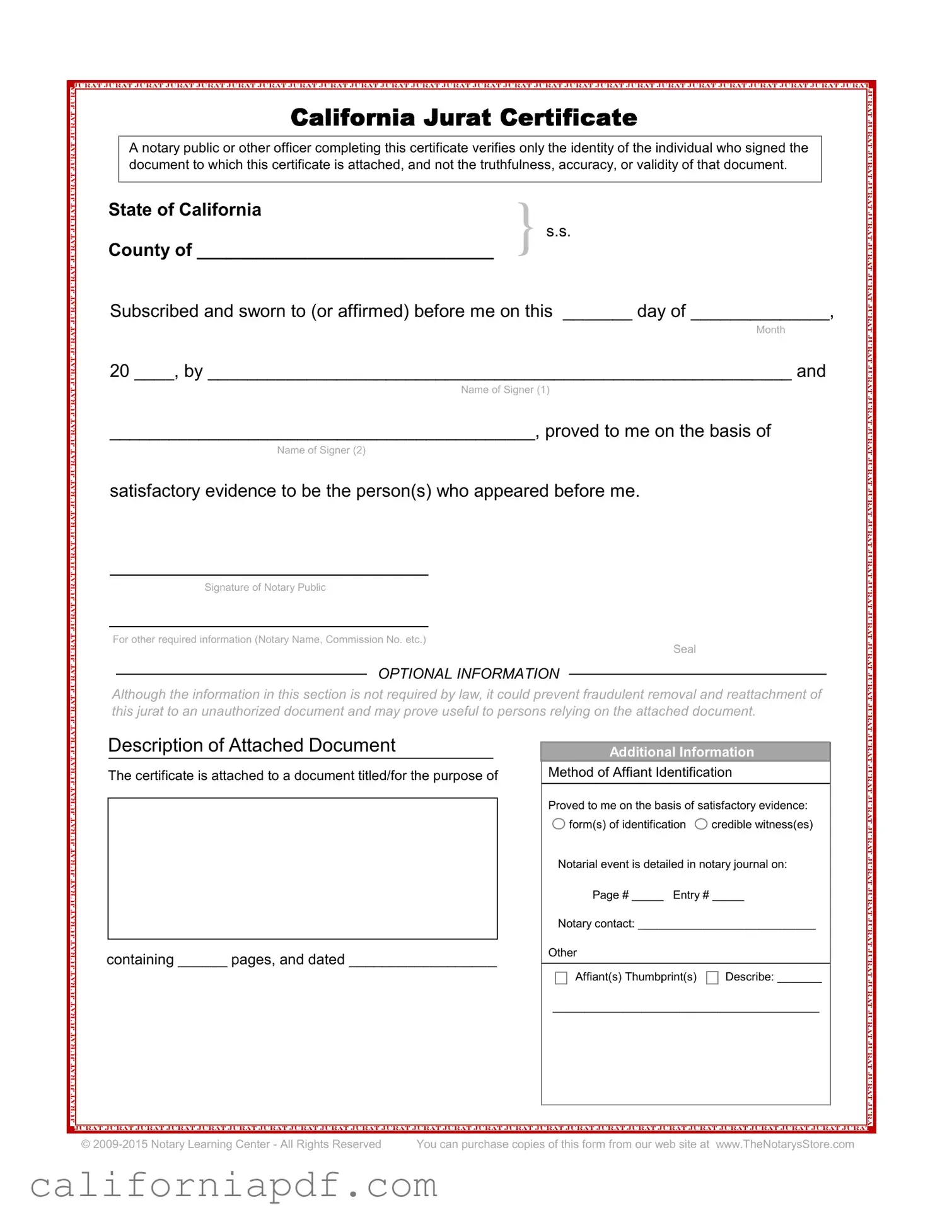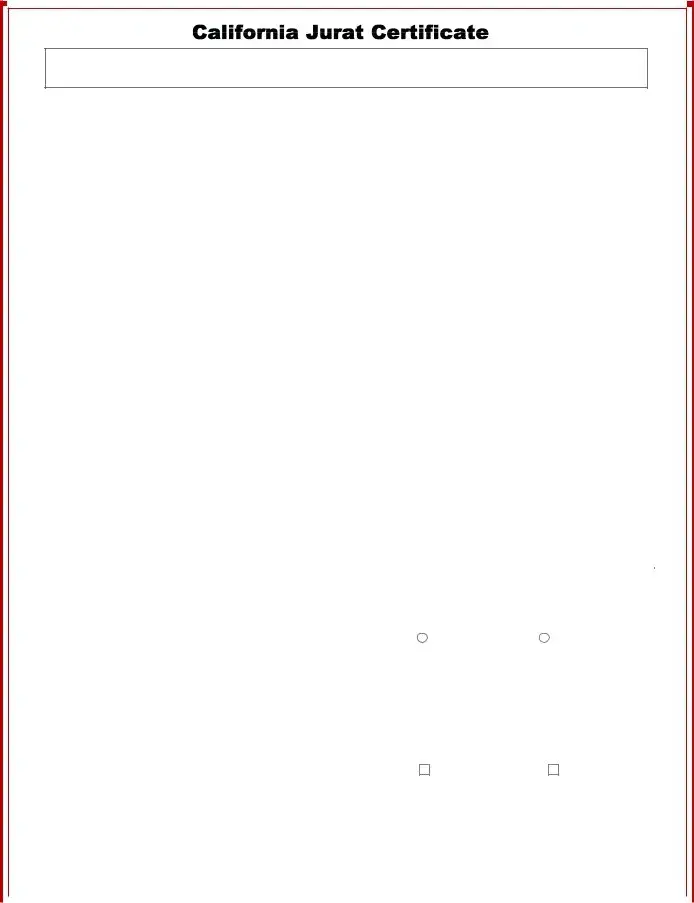Fill a Valid California Jurat Form
A California Jurat form is a vital legal document that serves as a sworn statement, asserting that the contents of an accompanying document are true and were signed in the presence of an authorized officer, usually a notary public. Its peculiar jumble of characters, symbols, and numbers at the outset might seem cryptic. However, each element plays a role in its validation, ensuring that any signed document it accompanies adheres strictly to the truth and abides by the law.
Fill Out Form Now

